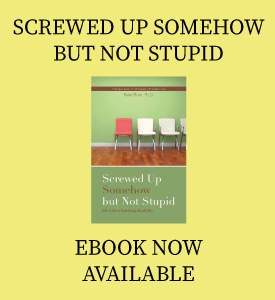Juggling is an interesting activity that can be helpful to many special needs children (or adults). It’s got several advantages, which I spell out below, and is much easier than most people think. MANY people can learn to juggle. If you can toss a ball from hand to hand, you can learn to juggle. If you can toss a ball one handed, you can learn to juggle too.
Advantages of juggling for special needs people
- It’s noncompetitive.
Many sports and other physical activities are usually competitive. Certainly all team sports usually are, but many individual sports lend themselves to competition. Losing is part of competition. Unfortunately, it’s a part that many special needs people are too familiar with. If you can handle it, fine. But it’s nice to do something where competition is not usually part of the deal. There ARE juggling competitions, but only a tiny percentage of jugglers take part in them.
- You can practice anywhere
If you are not very skilled at something, it can be embarrassing to do it in public. It’s hard to swim or run without someone seeing you. But you can practice juggling anywhere.
- It’s something most people can’t do at all
Wouldn’t it be nice, for once, to be able to do something that most “normal” people can’t do?
Who can learn to juggle?
A lot more people than you think! If you can toss a ball from hand to hand, or from one hand to itself, you can learn to juggle.
Equipment for juggling
Essentially, to learn the basic juggling moves, you need three objects, all the same size and shape. They should be small enough so you can hold two in one hand, but not much smaller than that, and heavy enough so you can easily feel them fall into your hand, but light enough so you can toss them easily. You’ll be tossing them a lot. Beanbags work well, or, if you have some old tennis balls, you can cut a slit in each and insert about 10 pennies. This not only makes them a bit heavier, but will stop them from rolling too much when you drop.
Where to practice
You can practice almost anywhere. One good spot is standing over a bed. Not only does this make it a lot easier to pick balls up when you drop, but it prevents you from moving forward to catch the balls; many people tend to throw the balls too far forward.
How to juggle
The key in learning to juggle is to break it down into small steps and not go on to the next step too soon. The easiest juggle for most people is the three ball cascade (see below if you have use of only one hand).
Step 1 – one ball. Take one ball (or beanbag, or whatever) in one hand. Toss it to the other hand. Then toss it back. Each toss should go to about eye height. Try NOT to look at the ball, except at the top of its arc. Practice until you barely have to move your hands to do this. Practice a lot. Some people get this quickly, some take a long time, but getting this step is the key, because this is what a 3 ball cascade consists of.
Step 2 – two balls, two tosses. Take two balls, one in each hand. Toss from your worst hand (for most people this is the left hand) then your better hand. The second toss should come when the first ball is at its peak. Then catch each. Then repeat. Repeat until this is easy. Toss toss catch catch.
Remember to watch the balls only at their peaks.
Step 3 – two balls, many tosses. Start as before, but instead of left, right; left right; left right, do the following (assuming you are right handed). Toss from your left, then your right, then pause, then your right, then your left. That pause is where the third ball will go. Again, practice until this is easy.
Step 4 – three balls. Start with two balls in one hand and one in the other. Toss from the hand with two balls and then do just as in step 3, but where the pause was, put another toss.
That’s it! You’re juggling!
Juggling with one hand
Some people only have use of one hand. You can still learn to juggle. First step is to toss the ball over and over in the same hand. Then, add the second ball, and toss it when the first ball gets to the peak of its arc.
This is harder than the three ball cascade, but it can be done.
Where to go from here?
This could be all the juggling you ever learn, and that’s fine. But if you want to learn more, a good place to look is the International Jugglers’ Association.
Happy juggling!



Thanks! I will share this with my 10yr old boy. He loves juggling and these are some good tips. He does a lot of his indoor practicing with scarves, less chance for mishaps *CRASHTINKLE* 🙂
Breaking it down in steps is a great idea
Hi Janlynne
Scarves can be good, but some people find them confusing. If you practice over a bed, it’s hard to break things.
Good luck to you and him, and thanks for your comment!
Peter
Thanks Peter. Wonderful to have met a man true to his word…this morning on The Coffee Klatch, you told us about writing a post on juggling and a few hours after, here it is! Appreciate all the tips you have included.
For those who like humor and pictures and need some help with common difficulties, the book, “juggling for the complete Klutz” is a great guide to learning how to juggle. It also comes with it’s own bean bags and so is a good gift for a kid.